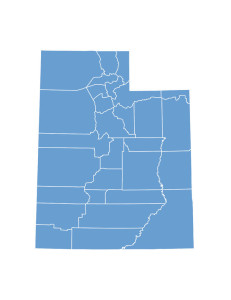Watch for state redistricting efforts this summer
 Although the legislative session ended in March, there’s a significant effort underway that involves a committee that will affect the political landscape, including the work that member districts do for years to come.
Although the legislative session ended in March, there’s a significant effort underway that involves a committee that will affect the political landscape, including the work that member districts do for years to come.
The newly-formed Utah Legislative Redistricting Committee had its introductory meeting in June, and they plan to not only meet more frequently throughout the year but also host some wide-ranging public meetings to talk about plans to redraw the boundaries of counties throughout the state.
This will all lead up to a special session in November to outline and pass any changes to boundaries throughout the Beehive State.
We’d like to give you a brief overview of this effort, including important timelines and how you can get involved. We’re definitely going to be watching and be active with this committee’s business throughout the rest of the year.
Redistricting and the Census
According to the Salt Lake Tribune and dispatches from the committee itself, it was the latest Census survey that detered this effort, which takes place every decade. The survey process was delayed for 2020, so states such as Utah have had to adjust to make sure there was enough time to do the redistricting in the proper way. The federal Census Bureau has pledged that data will be completed by Sept. 30.
In the meantime, the committee will be meeting to discuss plans and set up ways for the public to comment on the redistricting effort. You may learn more and follow updates at their official website for the committee.
What you should know about redistricting
One of the many reasons for redistricting relates to representation both at the state and federal level. As boundaries are redrawn, changes to the number of districts or their location can affect decisions in profound ways from decade to decade.
Right now, according to the Utah Redistricting website, there are 4 U.S. congressional districts, 75 state house districts, 29 state senate districts, and 15 state school board districts. All of those could be impacted, both in total number as well as population numbers with each one, directly affecting how you may be represented.
How to get involved in the process
The committee is definitely eager to hear from the public on restructuring, so they have enough data to validate any decisions or suggestions they make to the full legislature. To that end, they are hosting town halls once they have the census data on hand. The Salt Lake Tribute reports that there are 11 meetings taking place in the late summer and early fall, including ones scheduled for Orem, Ogden, St. George and Price, among others.
In an interesting technological twist, you can also give a specific idea of your own about where the boundaries should be. The Utah Redistricting site has a mapmaker that lets you do this redrawing on your own, with the capability to print out and then bring to one of these special sessions. That map-making will be available once the census data is released.
Rest assured that we will be watching closely what it taking place with this effort to make sure special districts are being represented in the best way possible for all of our interests. To learn more about what we can do together to make Utah a great place to live and work, visit our website.






